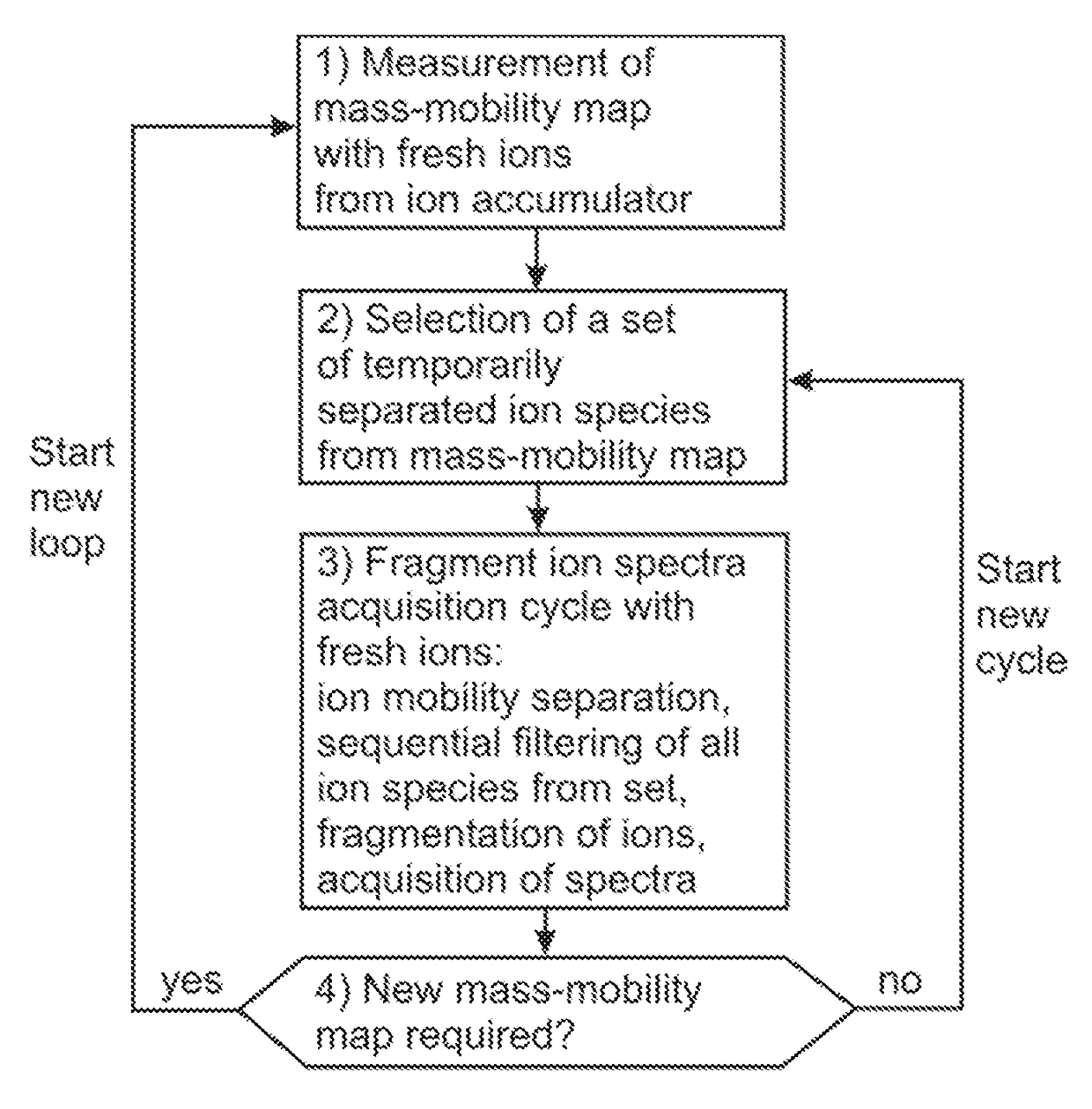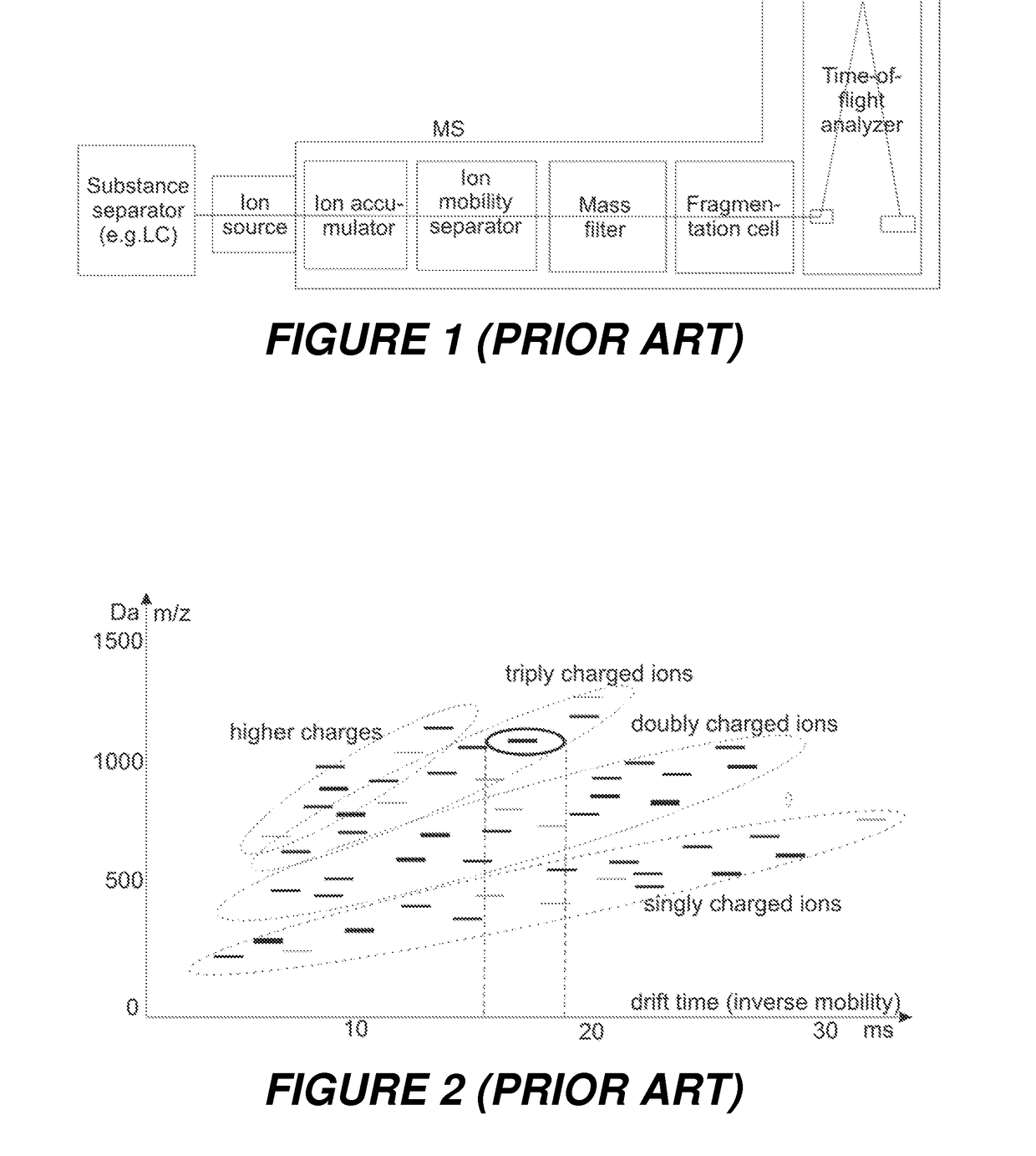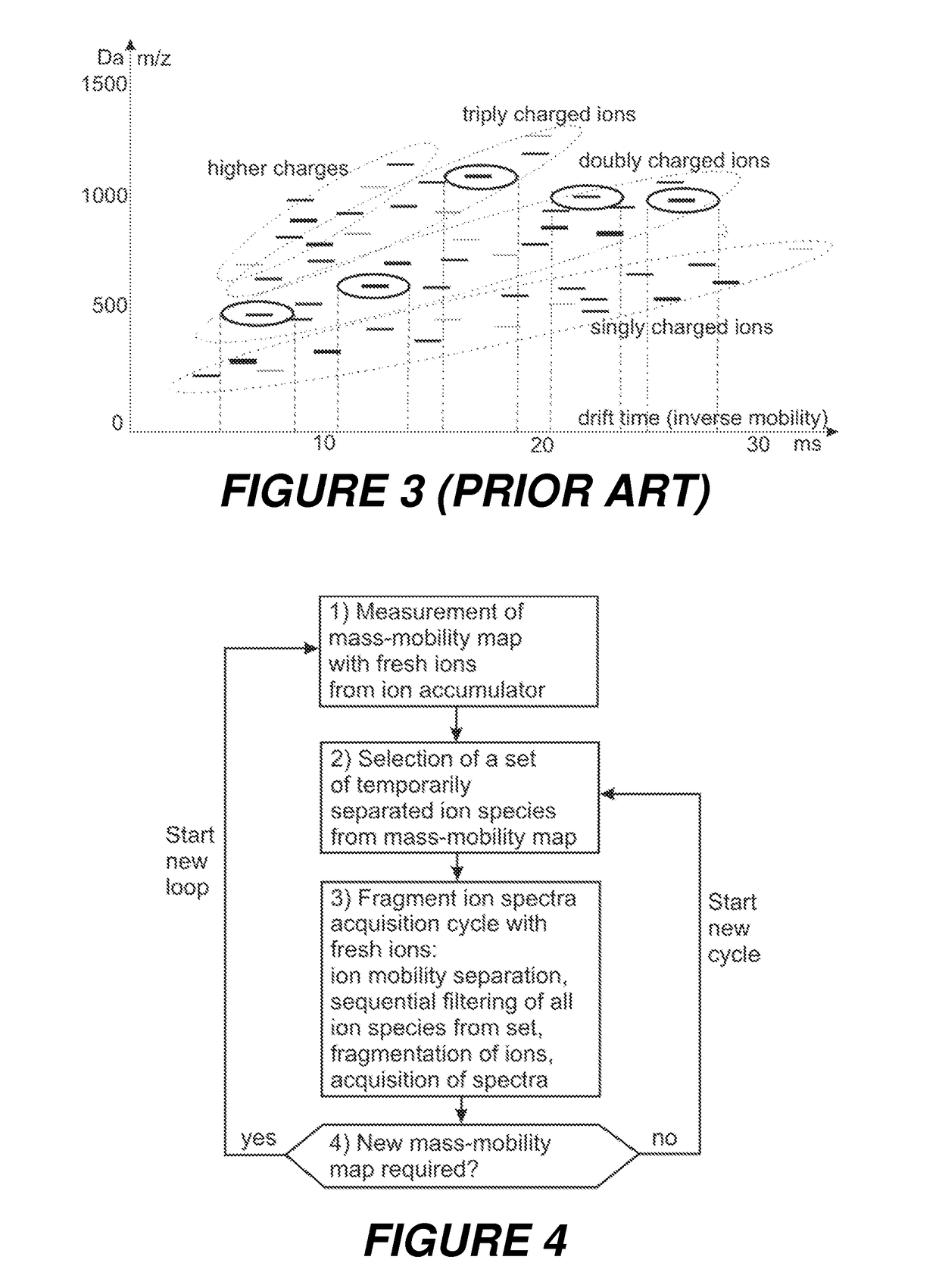Acquisition of fragment ion mass spectra of ions separated by their mobility
a technology of mobility and fragment ion, applied in the field of high efficiency, can solve the problems of scarcely any possibility to adapt the separation characteristics to the requirements of analytical tasks, practicable limits to obey, etc., and achieve the effects of increasing mobility resolution, prolonging the ion accumulation duration, and decreasing the measuring capacity
- Summary
- Abstract
- Description
- Claims
- Application Information
AI Technical Summary
Benefits of technology
Problems solved by technology
Method used
Image
Examples
Embodiment Construction
[0041]The expressions “separator” and “separation” are used herein for devices and methods which separate different substances or different ion species in time. Chromatography, capillary electrophoresis, and ion mobility spectrometry are separation methods. The term “filter” is applied to devices and methods which let pass only selected ion species from a larger variety offered. An example is the RF quadrupole mass filter, capable of filtering ions by mass.
[0042]A “fragment ion mass spectrum measurement cycle”, in short “cycle” or “measurement cycle”, starts with the transfer of fresh ions from the accumulation unit to the ion mobility scan unit, and measures a set of fragment ion mass spectra from ion species, selected from a mass-mobility map. A “measurement loop” is a term used herein having a special meaning, and starts with the measurement of a new mass-mobility map, followed by several fragment ion mass spectrum measurement cycles.
[0043]The “mobility scan time” or “mobility sc...
PUM
| Property | Measurement | Unit |
|---|---|---|
| time | aaaaa | aaaaa |
| Ion Mobility Quadrupole Time- | aaaaa | aaaaa |
| time- | aaaaa | aaaaa |
Abstract
Description
Claims
Application Information
 Login to View More
Login to View More - R&D
- Intellectual Property
- Life Sciences
- Materials
- Tech Scout
- Unparalleled Data Quality
- Higher Quality Content
- 60% Fewer Hallucinations
Browse by: Latest US Patents, China's latest patents, Technical Efficacy Thesaurus, Application Domain, Technology Topic, Popular Technical Reports.
© 2025 PatSnap. All rights reserved.Legal|Privacy policy|Modern Slavery Act Transparency Statement|Sitemap|About US| Contact US: help@patsnap.com



